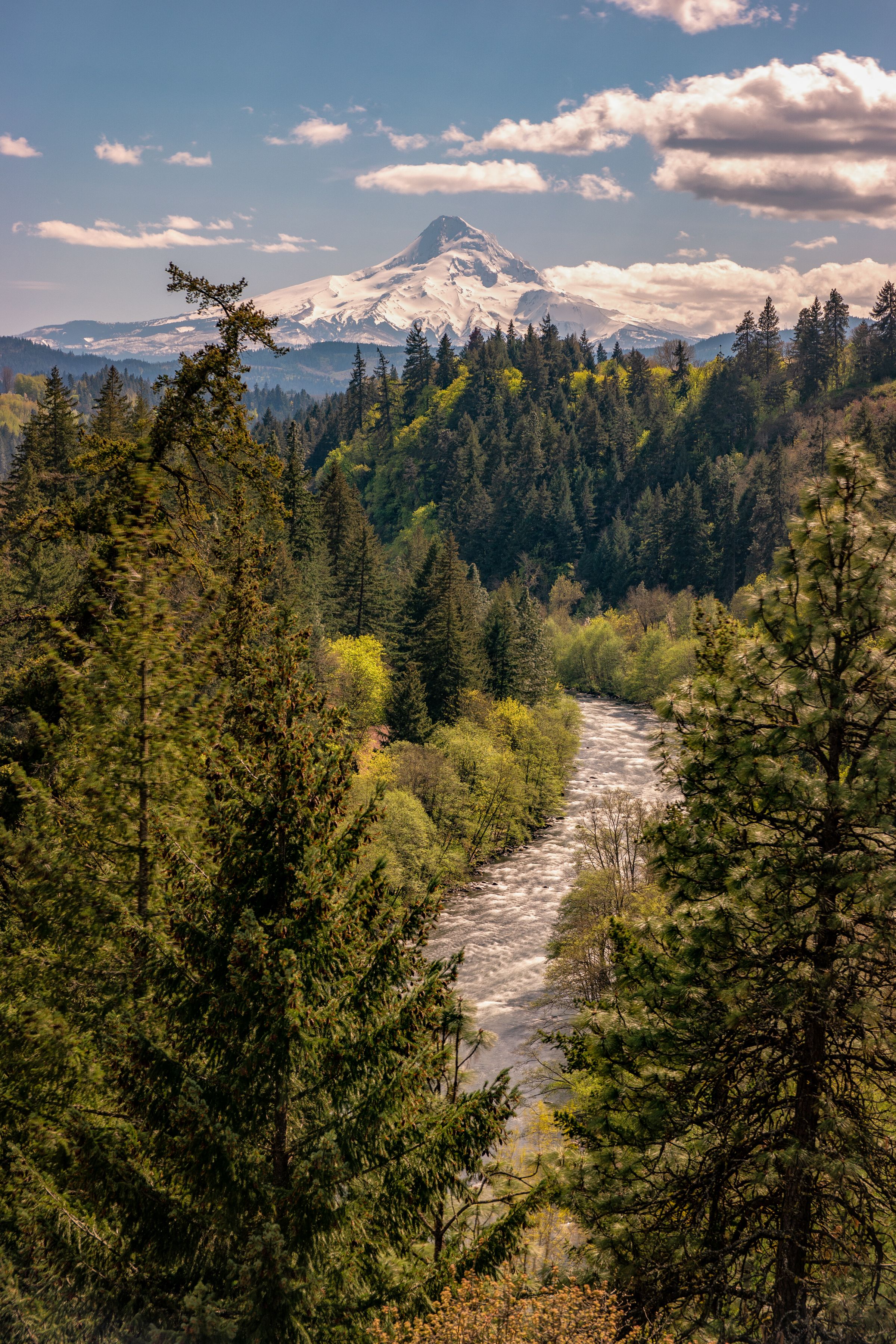Food and Wine as Epic as the Nature in the Columbia River Gorge

Exploring the Hidden Gems of the Columbia Gorge
At Buona Notte Winery in Cascade Locks, Oregon, my husband and I were treated to a delightful experience. The winemaker, Graham Markel, served his pét-nat, which was zippy and refreshing. The appetizer table was overflowing with melon and prosciutto, while platters of salad, grilled potatoes with salsa verde, and roast pork filled several candlelit tables adorned with wildflowers. We had come for a late-spring feast to celebrate the seven local growers from whom Markel sources grapes to make his delicious Italian-style wines. He is one of a handful of young winemakers who are putting the Columbia Gorge on the wine map. Alongside him are cidermakers like Jasper Smith and Ella McCallion of Son of Man, who craft their wild-fermented Basque-style brews in the same space as Markel. This renegade group may not have the slick tasting rooms or award-winning Pinot Noirs of Oregon's better-known Willamette Valley, but they make up for it with their passion for their craft and the land they work on.
The Columbia Gorge has been an official American Viticultural Area for only 20 years, but people have been growing grapes here since the 1840s. Formed by ancient volcanoes and glacial floods, the Columbia River starts in British Columbia and empties into the Pacific. For the last 309 miles of its 1,243-mile journey, it divides Oregon and Washington. Eighty miles of that borderland is the Gorge, a deep river canyon featuring dramatic basalt cliffs, waterfalls, and some of the most beautiful trails in the Pacific Northwest. For years, the town of Hood River, on the Oregon side, was known for its world-class windsurfing and, more recently, its craft breweries. However, we chose to stay across the river in White Salmon, Washington, closer to some of the area's new wineries and restaurants. Perched high on a cliff, the town offers the best bakery in the Gorge, a charming wine bar, and stunning views of Mount Hood on a clear day.
In contrast to the more rustic accommodations of my previous visits, such as the cabins at the Society Hotel and the glamping-style tents at Skamania Lodge, this time we stayed in the cedarwood-and-corten-steel environs of the new Iconica and the recently updated Inn of the White Salmon. Most days, we woke early and hit the trails. We had unknowingly timed our visit perfectly with wildflower season, and on the Catherine Creek loop, we found the landscape a riot of purple lupines and yolk yellow balsamroot. After each hike, we made a beeline for White Salmon Baking Co., where we rewarded ourselves with blueberry polenta cake or mushroom scrambles.
White Salmon has only about 2,600 residents, but its restaurant scene is impressive for a town of that size. We enjoyed excellent carnitas tacos at Pixán Taqueria & Cantina, perfectly cooked steak with crispy potatoes at Henri's, and a delicious burrata served with mint pesto at the tasting room Soča Wine Shop & Bar. Much credit for the town's thriving food scene goes to California-native Nina Jimenez and Slovenia-born Jure Poberaj, an entrepreneurial couple who opened White Salmon Baking Co. and Soča before selling both to focus on their winery, Poberaj Wines. One afternoon, I drove into the hills above White Salmon to visit them. After Poberaj, the nephew of natural winemaking pioneer Joško Gravner, led me past the clay amphora he'd just buried in the ground, we tasted wines directly from the barrel.
“We're very serious about having fun,” said Malia Myers, who, along with Melaney Schmidt, founded Landmass Wines. I laughed as she and Schmidt showed me around the winery they opened in Cascade Locks in 2023: Wine tanks are named after female screen characters, like Regina (from Mean Girls) and Oksana (from Killing Eve). The couple built their business via Instagram, doing home deliveries during the pandemic.
As at Buona Notte and Landmass, there's a hands-on ethos at Loop de Loop, Julia Bailey Gulstine's winery on nearby Underwood Mountain; she and her husband, Scott, built the interior of their tasting room themselves. She poured me a glass of her Borderline Red Pinot Gris, which had a surprising pinkish-orange shade. As we wandered into the forest—where she pointed out a ghost orchid, evidence of healthy soil—we talked about her peripatetic career path. A former aid worker in the Middle East, she caught the wine bug when a Palestinian winemaker friend dropped a bunch of grapes on her doorstep. “I bought kiddie pools to macerate the grapes and used a sheet to strain the juice,” she said. “It actually turned out pretty good.” Once back in Oregon she started making wine before she and Scott moved to the Gorge in 2019. Walking back through their organic vineyard, the wind whipping my hair, I realized that it's the winemakers, as much as the land itself, that make this place still feel so refreshingly untamed.
Post a Comment for "Food and Wine as Epic as the Nature in the Columbia River Gorge"
Post a Comment